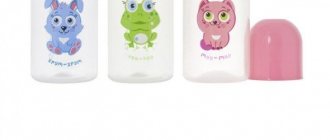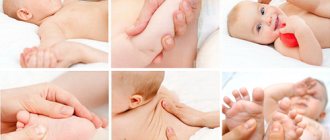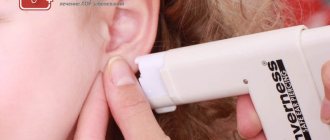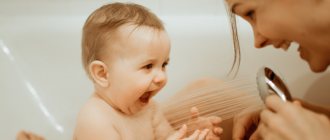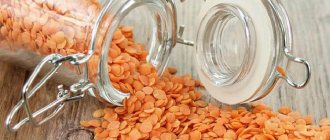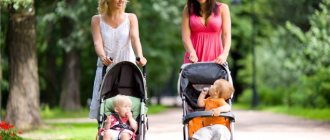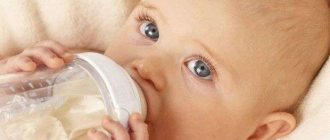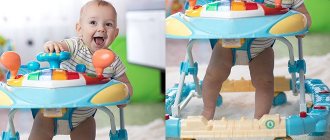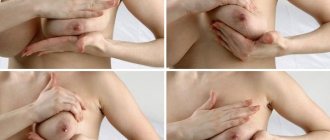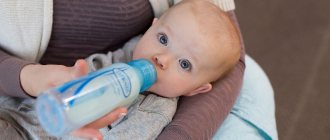Every woman, having become a mother for the first time, initially thinks about how to maintain the health of her baby. In Russia, many pediatricians recommend sterilizing the dishes from which babies eat and drink. In Europe, this is taken more simply and they suggest keeping the child in more natural conditions, without creating an incubator.
Each mother makes her own decision on how to care for her child. And when there is concern about the baby’s health, it is better to play it safe. If you decide to keep your child in extremely clean conditions, let's look at all the options for washing and sterilizing bottles.
Requirements for baby detergent
There is a huge selection of products on store shelves that position themselves as “environmentally friendly products” and “completely safe for children.” But is it? Looking at the label, the user sees large inscriptions that encourage the use of a gel without fragrances and parabens. Often this is nothing more than a publicity stunt.
Turn the bottle over and read the ingredients.
- Harmful substances that are prohibited even for washing dishes by adults (phosphates, parabens, petroleum products, formaldehydes).
- Ingredients that cause an allergic reaction.
- Strong floral aroma, pungent odor of acetone, solvent (preferably odorless).
- Bleaching reagents that disinfect dishes (perborate, sodium percarbonate).
- Products that improve the effectiveness of washing in cold and hot water.
An important sign of product safety is washability from the surface. If there is insufficient rinsing, surfactants remain on the plates. As a result, the substances enter the food and then the child’s body.
According to GOST, the surfactant residue should not exceed 0.1-0.5 mg/dm³.
Therefore, choose a product with surfactants obtained from natural raw materials (cocoamidopropyl betaine, lauramidopropyl betaine). These components are more expensive to manufacture, but are of high quality.
Which product is better to choose for children's institutions and home use? Let's look at the main groups: purchased for washing by hand and in a machine, homemade.
For hand washing
It is always faster to wash baby bottles, plates, spoons, and toys by hand. To load the dishwasher, dirty utensils still need to be collected, while one of them may be urgently needed. Therefore, we will first consider hand washing products.
Balm “Umka”
This gel is recommended for use by many mothers. It gently cleans dishes and other things (suitable for pacifiers, baby bottles, toys). Foams well and removes dirt in cold water. Rinses off effectively.
“Umka” has hypoallergenic properties. It has no distinct odor and is colorless.
Contains 30% water. No more than 5% plant extract, preservative, citric acid, antibacterial component. 5-15% - sodium chloride and anionic substances.
You will be pleased with the low cost: from 50 to 70 rubles. According to consumer reviews, one bottle lasts for a month.
Babyline
What product can you use to wash not only your child’s belongings, but also vegetables? Yes, this is Babyline brand gel. At least that's what the manufacturer says. Positive reviews lead us to believe that the product really does not contain harmful substances.
Here's what's included:
- glucose APG;
- herbal ingredient;
- surfactant;
- food flavoring;
- distilled water.
The bottle has a convenient dispenser, the gel is thick, transparent, odorless. A couple of drops are enough to wash everything you need. The product is hypoallergenic, does not tighten or irritate the skin of the hands. But, according to consumers, it copes with fat by 4 points. The downside is the high cost, from 130 rubles.
AQA baby
Suitable for cleaning nipples, bottles, plates, spoons, as well as fruits and vegetables. Economical consumption. One package lasts for two months. The bottle is similar to baby soap; a convenient dispenser allows you to measure the exact amount of gel.
What does it contain:
- nonionic and anionic surfactants (3-15%);
- preservative;
- perfume composition;
- water.
A transparent substance with a pleasant fruity odor. Effectively washed off from the surface of devices. Cost - from 130 rubles. Mothers rate AQA baby generally positively, but many are not satisfied with the presence of surfactants in the composition. However, do not forget that these are household chemicals, not a home remedy.
Meine Liebe
A transparent, thick substance in a bottle with a dispenser copes well with grease stains and effectively removes wax from fruits. The gel foams well and is washed off the surface without any residue.
The German manufacturer claims that the product is environmentally friendly and safe for kindergartens and household use. Despite this, no badges indicating the completion of an environmental assessment were found. The composition exceeds the norm of anionic surfactants - 15-30% (compared to other manufacturers). Meine Liebe also includes preservatives (5%), water, salt, citric acid.
Price - from 100 rubles.
We do not include such a popular product “Eared Nanny” in the rating, since many users complain about the composition (non-surfactants, anti-surfactants), poor rinsing from surfaces and the tendency of the skin to peel and allergies.
"Stork"
Suitable for washing cutlery, breast pumps, pacifiers, bottles, rattles. Thick, transparent substance foams well. Does not tighten the skin of the hands, has a bactericidal effect thanks to silver ions. Convenient dispenser. 500 ml bottle.
Balm "Aistenok" includes surfactants of plant origin, sodium citrate, silver, glycerin. Also polymer, flavor and chamomile extract. Cons from users: strong smell, flaking of the skin of the hands.
Which detergent is better is up to you to decide. After reviewing our rating, you can draw conclusions.
For dishwasher
If you are used to using a dishwasher, below we list popular detergents for washing in PMM. This is especially convenient when a bunch of children's toys have accumulated, because they can not only be rinsed, but also disinfected at high temperature. Which is quite difficult to do manually.
BioMio tablets
Eco-friendly tablets with natural ingredients 7in1. They effectively fight stains even in cold water and add shine to glass and steel. Prevents the appearance of limescale, which affects the operation of the machine heater.
According to the manufacturer, BioMio does not contain surfactants, chlorine, artificial flavors, PEG and other harmful substances. The composition includes oxygen bleach, natural fragrance, polycarboxylates. A package of 30 tablets lasts for a month with daily use. There are no streaks left on the dishes.
Plus: dissolvable packaging of each tablet, no need to wash your hands after use.
Price - from 580 rubles.
Jofure
Universal powder made in Japan. Does not harm nature and is completely biodegradable. The absence of harmful ingredients allows you to care for dishes for the whole family.
The composition includes surfactant (2%), alkali, softener, bleach, enzymes. It is worth considering that the powder is not suitable for plates with patterns, aluminum, or coatings.
We found negative reviews about the product on the forums: users complained that the design was washed off the plates and glasses and the glossy layer was removed. However, the packaging indicates which dishes the powder should not be used on.
Read the “Method of Use” carefully before purchasing this or that product.
Cost - from 500 rubles.
Ecover
Tablets in individual packaging without flavors, phosphates, sulfates. Suitable for any dishwasher. They will remove dirt and grease from baby dishes, rattles, and pacifiers. Ecover includes oxygen bleach, surfactant (5%), enzymes, sodium gluconate, glycerin and more.
The tablets are completely biodegradable and require no salt or rinse aid. Prevent the appearance of plaque. They wash away grease and other contaminants well. Glass utensils are washed without streaks. Disadvantage: high cost - from 790 rubles.
We suggest you familiarize yourself with How and how to remove water-based paint from floors and wallpaper
This is an organic powder for PMM. Does not contain chlorine and phosphates, while effectively removing traces of tea and coffee. Can be used for processing children's equipment.
The product is completely hypoallergenic, as confirmed by the DAAB allergy association. Created based on natural substances.
In the composition you will find sodium silicate, citric acid, and plant-based detergents. Positive reviews indicate customer confidence in the product. Price - from 500 rubles.
If you still have a question about what to wash dishes with, then read the next point.
For those who want a completely natural remedy, we recommend using what you have on hand. Everyone knows that you can use baking soda and dry mustard for hand washing. And we will tell you how to create dishwasher powder from simple ingredients.
- Mix half a glass of fine salt with a glass of baking soda. Add one glass of borax and 100 g of citric acid to the mixture. The safe powder is ready.
Remember! The home remedy should not be used continuously. This will lead to rapid equipment breakdown.
- Mix one cup each of baking powder and borax. Add two glasses of soda. The mixture does not store well, so it must be used within a month.
- An example of a homemade liquid gel: add 50 g of lemon juice to 25 g of glycerin. Finish the concentrate with 1 tsp. alcohol and 3 tbsp. water.
A universal mixture of laundry soap with the addition of soda and warm water will help out in various everyday situations.
We hope our article will help you make the right choice and take care of your children’s health. The main thing is to carefully study the label. A brand, no matter how famous it is, does not always indicate the quality of the product. Good luck!
Reading the composition
To wash children's dishes, we recommend choosing products with a clear and pure composition, as natural as possible. Liquid for washing children's dishes should preferably be hypoallergenic. In most cases, such products are odorless or have a light, unobtrusive natural aroma.
Eco-friendly dishwashing liquid, which is suitable for the whole family, does not contain petrochemical products, dyes and does not leave a chemical film on the surface of the dishes. And the detergent for washing children's dishes, especially, should not contain essential oils and allergy-causing components.
Such products tend to cost a little more, but don't let that put you off. They are very economical in consumption, and you will not buy such products too often. And is it worth saving on health?
How to wash baby bottles?
Your baby's dishes must be cleaned in a specific order. Strict adherence to the rules will help protect your child from bacteria. So, how and what to wash baby bottles with?
- Immediately after feeding, the dishes must be disassembled. The bottle, nipple and ring should be washed separately. This is very important, as milk can accumulate between the parts, which will provoke the growth of bacteria.
- Then all parts should be rinsed, getting rid of any remaining milk or porridge, or plaque. The water should be as hot as possible.
- If the dishes are very dirty, you can fill them with soda solution for a while and leave them in the sink. Next, all parts are thoroughly cleaned with a brush or brush. Increased attention must be paid to cleaning the bottom and threads.
- After this, the bottle is rinsed again with hot water.
It is not only important what you use to wash baby bottles for newborns and older babies. Parents should also not forget the importance of sterilization. Fortunately, the myth that utensils need to be sterilized before each use until the baby is six months old was debunked some time ago. Doctors are unanimous in their opinion that this is not necessary.
Be sure to sterilize the container before using it for the first time. It is also recommended to do this after a long break in use.
This can be done by boiling. The vessel must be immersed in a pan filled with filtered water. Boiling continues for 5-7 minutes. Next, the baby dishes should be removed using tongs. It is laid out on a clean towel until completely dry. We must not forget that rubber nipples quickly fail after such a procedure. However, it does not harm silicone products.
The procedure can also be carried out using a special sterilizer. The device must be filled with water, and then bottles must be placed in it. Next, you should cover the sterilizer with a lid, connect it to the network and start it up. The process takes about 10 minutes.
Of course, there are other ways. Some parents prefer to hold the bottles over the steam that rises from the pan or kettle. Others immerse baby dishes in a glass container of water and then microwave them for a few minutes. Special reusable bags for sterilization .
This question worries many parents today. To some, washing seems like a tedious, boring activity that they can completely do without. However, this manipulation cannot be skipped.
Its absence can affect the child's health. If you need to know how to wash baby bottles, consult your doctor for advice. He will give all the necessary recommendations.
A foster nurse visiting the baby can also help in this matter.
The main rule is to do this immediately after feeding. It is very important to keep the dishes clean; newborns are susceptible to various infections.
After purchasing a bottle, sterilize it. This action does not have to be performed after every meal; it will be enough to wash with soap and rinse. The main task is to thoroughly wash baby bottles and pacifiers with a brush and pour boiling water over them.
How to wash baby bottles:
- baby soap;
- soda solution;
- boiling;
- sterilization;
- baby detergents;
- under running water.
Some parents, on the advice of their grandmothers, wash dishes using folk remedies. Thus, they fight against bacteria that can settle there. When it comes to figuring out how to wash baby bottles, housewives resort to mustard powder, soda, and lemon.
The older generation absolutely refuses to use other detergents. However, there is a whole list of ways.
This should be done after each feeding. First, the dishes are freed from food residues. If necessary, use a brush if mold has formed in the baby bottle. In such cases, wash with soap and warm liquid.
How to wash baby bottles:
- pay attention to the bottom. If a dirty baby formula bottle has been sitting for a while, there will be deposits that need to be soaked off;
- when you have a product for washing baby bottles at home, you can use it for soaking;
- Having thoroughly washed and rinsed the dishes, wipe them dry with a towel specially designed for this purpose;
- Baby bottles and pacifiers can be washed in the dishwasher. However, it is recommended to avoid this method if the mother is in doubt about which baby bottle cleaner to choose. Conventional detergents for such partings can cause allergies.
Many parents, having raised a child, have not determined what is the best means for washing baby bottles, because they have never used anything. Each detergent contains chlorine, phosphates and other substances harmful to the baby’s body in varying quantities. In order not to harm the baby, they washed the containers with folk remedies, rinsing them under running water.
Is it possible to pour boiling water into a baby bottle? Yes, if they are glass or plastic, but do not contain BPA. An old method of sterilization is also to dip the container in boiling water and keep it there for a while. You can wash baby bottles with boiling water and then leave them to dry.
It has been proven in practice that this item easily cleans children's dishes from deposits and dirt accumulated in them.
There are the following types of brushes:
- brush with a foam tip. It cleans delicately and does not scratch. The handle contains a button for its extension;
- brushes from Dr. Brown`s combine a combination of bristles and sponges. There is absolutely no risk of damaging the inner surface. The base has a suction cup for easy storage;
- brush for washing nipples and bottles with sponge. Easily removes food debris from inside;
- “2in1” brushes are designed for washing bottles and nipples. The bristles have antibacterial treatment;
- The CHICCO brush is multifunctional. In addition to its main activity, it can be freely converted into forceps that grip the bottle after sterilization.
How to choose a brush for washing baby bottles? Pay attention to the length of the container; your hand should not get inside. Width is also important. For narrow dishes, choose a thin baby bottle brush. The shape of the product matters. If the container is curved, then it is better to wash baby bottles with a curved brush.
What is the lifespan of baby bottles? If everything is in order with the container, it does not need to be changed. First of all, this statement applies to glassware.
We invite you to familiarize yourself with Mold and white deposits in potted indoor plants. How to get rid of mold on the ground?
When it is in excellent condition, it will last for a long time. It is recommended to change Avent bottles once a year. If a crack appears on the container, it must be replaced immediately.
The shelf life of baby bottles is determined by their wear and tear, and they begin to release toxic substances.
It is very important to wash baby bottles properly. This is the first dish for a baby, where bacteria can grow in the milk environment and harm the health of the baby.
Parents of newborn babies constantly have to learn and remember something new. The baby's health depends on many factors. For example, how to wash baby bottles? How to protect your baby from bacteria? The detailed instructions below will make the task easier.
Where to begin
Infant feeding utensils must be disinfected after each use. This prevents the child from developing disorders and serious digestive problems. It is important to choose the right product. Natural liquid formulations effectively and absolutely safely sterilize the inside of the bottle and nipple.
They do not contain chemicals and are made from environmentally friendly components. Experts from the Daughters-Sons online store will tell you how to properly wash baby bottles and pacifiers and what safe detergents to pay attention to.
Modern liquids based on natural extracts easily wash away dried residues of milk, mixture, puree or porridge, even in cold water. The foam composition is completely washed off from the surface.
The bottle cleaner from the Pigeon brand has proven itself to be excellent. It is based on food grade sucrose ester, which is not at all dangerous if accidentally ingested by a baby. Parents even wash fruits and vegetables with bioactive ingredients.
How to wash baby bottles and pacifiers:
- products based on vegetable oil;
- compositions with citrus essential oils;
- products based on sucrose ester;
- substances with medicinal chamomile extract.
Products for the daily care of children's dishes are thoroughly tested. Practice shows that such products do not cause allergies, do not dry out mother’s hands and have a 100% antimicrobial effect.
Brand Features Detergent component
Table 1. Features of the most popular detergents for washing children's dishes
| Aqa Baby | Used from the first days of a newborn's life. It is very easy to wash off the residue in cold water. | Collection of herbal extracts. Liquid based on purified artesian water. |
| Pigeon | It is successfully used for high-quality washing of various products intended for feeding babies from birth. | Bioactive ester of food sucrose. Does not harm the gastrointestinal tract. |
| Nuk | With biologically active substances. Quickly cleans children's accessories and dishes from food debris. | Made using safe plant materials. |
| BioMio | You can wash both sippy cups and food. Gently affects the skin of the hands. Has a pleasant smell. | Based on edible essential oil of mandarin. |
| "Umka" | Completely washes off in any water. Has a good antibacterial effect. Leaves mom's hands tender. | Contains an antibacterial extract of plant origin. |
Doctors strongly recommend washing baby feeding equipment with a new, clean washcloth or napkin. They need to be changed as often as possible, at least once a day.
Mothers who are prone to allergic reactions use detergents with anti-allergenic and antimicrobial effects to wash their children's dishes. For example, the Sodasan brand offers Sensitive for parents who are allergic to unnatural ingredients. The natural extracts included in these products kill germs that are dangerous to the child.
Basic requirements for detergents for washing children's dishes
Modern parents do not use popular advice and purchase goods in specialized household chemical stores. In order to choose the right safe detergents for washing children's dishes, you must adhere to the following recommendations:
- dyes and fragrances cannot be present in the composition of products that are used to care for products that are in contact with newborns;
- Dishwashing detergent for children must comply with GOST and sanitary standards;
- detergent can be easily washed off regardless of the temperature of the water;
- A natural detergent for washing children's dishes should not contain any chemical compounds.
If the composition contains antibacterial components, this will contribute to good disinfection. Another important criterion is the presence of components that protect the skin from dryness and irritation.
The information provided on labels is often difficult to read and incomprehensible, and the composition is very important if the product is used for small children. The website of our resource sells products from leading manufacturers who monitor the quality criteria of their products.
In the online store “It’s time to go to the maternity hospital”, each client will be able to choose the optimal dishwashing detergent for children. The price of a product is formed from several components: the manufacturer and the specific composition. To buy a natural detergent for washing children's dishes, just place an order on our website. It won't take much time. A website visitor can buy a product at any convenient time, regardless of location.
How to wash baby bottles: rules, means, sterilization, methods for removing yellowness
How to wash baby bottles so as not to harm the baby? It is allowed to use detergents that do not pose a threat to it. For example, it could be laundry or baby soap. It is also permissible to use a product designed specifically for washing children's dishes. The packaging must contain a corresponding mark.
Some moms and dads prefer traditional recipes that have been tested for centuries. They wash the bottles with table salt, baking soda, and mustard powder. Conservative parents do not trust modern detergents, and rightly so. All of them are tested for harmful substances.
Where to begin
But sometimes women have problems with lactation, the baby does not latch on to the breast, and he has to be fed from a baby bottle.
It is not difficult to learn how to wash such dishes; it is important to choose a natural product that does not contain chemicals for disinfection.
The immune system of newborns and infants is not always able to cope with bacteria that live in the external environment.
Microbes that enter the baby's digestive tract during bottle feeding cause stomach upset, the baby loses appetite and can become seriously ill.
Bacteria settle and multiply in water from taps and wells; the source of infection is the milk formula that is fed to the baby.
Sterilization of children's dishes makes it possible to protect the child's fragile body from diseases of the digestive tract caused by microbes. It is necessary to disinfect diapers and dishes only in the first weeks after the birth of a newborn.
Regardless of the chosen disinfection method, bottles must first be washed using soda or salt, special liquids produced for the care of baby dishes. The walls must be thoroughly cleaned of plaque and milk mixture.
Boiling
To disinfect glass bottles, use a small saucepan, fill it to the top with water and place it on the stove. Place the untwisted container in it and boil under the lid for 10 minutes.
Do not expose plastic models to heat. The material melts and releases toxins. Before sterilizing bottles, it is recommended to first boil hard water, otherwise the dishes will become coated.
Steam treatment
In the absence of special household appliances, you can destroy germs on children's dishes by using kitchen utensils. Water is poured into a saucepan or stewpan, a colander is placed on top, and jars and bottles are placed on top of it upside down. After the liquid boils, steam is released; you need to hold the pan over it for at least 10 minutes.
Disinfecting a child's accessories by boiling takes a lot of time; when disinfecting bottles with steam, it is easy to get burned, and many parents buy sterilizers. The device is manufactured in the form of a reservoir that can accommodate dishes with different neck diameters.
The electric model consists of a housing, a heating element, a container for liquid, operates from a 220V network:
- A glass of water is poured into a special compartment.
- Bottles and nipples are provided.
- Lower the lid.
- Press the power button.
Microwave sterilizers are placed in a microwave, where jars and other utensils are disinfected with steam for 10 minutes. Ultraviolet devices that are powered by mains or batteries do not use water; the bottles are disinfected with rays from lamps located inside the body. Some models of sterilizers not only kill germs, but also warm up the baby's formula.
Modern household appliances such as multicookers come to the aid of young mothers, in which they prepare dietary dishes from meat, fish, side dishes from cereals and steamed vegetables. Baby dishes, along with pacifiers and nipples, are placed on a wire rack or strainer, the lower bowl is filled with water, the steam mode is selected and the time is set.
Devices absorb the smell of food; before sterilizing children's products, all parts must be washed thoroughly.
We suggest you familiarize yourself with How to clean linoleum from stubborn dirt or grease - tips from
Microwave
To heat a portion of the mixture, it is not necessary to light a fire or place a pan on the stove. For this purpose, people are increasingly using modern technology - the microwave. It also disinfects dishes that are filled with formula for the baby. Place the bottles in a glass bowl, which is placed in the oven, for 3 minutes. Nipples and elastic bands are sterilized separately.
Modern parents often travel with children. To feed your baby on the road, the dishes must be disinfected. Pharmacies sell special antiseptics that destroy germs.
In cold water
It is not always possible to have boiling water at hand; tablets containing sodium dichloroisocyanurate are not dangerous for children and dissolve in cold water. To disinfect bottles:
- The composition is poured into a deep bowl.
- Lower the dishes and nipples so that they are completely in the liquid.
- Leave for half an hour.
It is not recommended to use tablets every day. It is better to disinfect bottles with steam before feeding, which destroys all harmful bacteria.
How and what to wash
The dishes to be sterilized must be clean and dried, without any vegetable puree or mixture dried on the walls. Jars, cups and bottles are washed with liquid formulations made from vegetable oils and herbal extracts.
Conventional means
To clean glass children's dishes, sometimes boiling water and a brush, which is scalded with hot water, is enough. Plastic items cannot be heat treated, but can be gently washed with soda, being careful not to scratch the dishes.
Regular salt copes with fat, cleans bottles of vegetable puree, mustard powder removes the remnants of porridge, butter, and milk formula. Any contamination is removed with laundry soap. Citric acid removes plaque and lightens dark stains from fruit juices.
Not all parents trust soda or table salt and buy special detergents in household chemicals departments that do not contain:
- aggressive dyes;
- synthetic fragrances;
- phosphates;
- oil compounds.
Liquids based on olive or other vegetable oil are safe for babies. Such gels remove fat, are easy to rinse, have a delicate scent, and soften the skin.
The quality of organic products that are produced specifically for washing children's dishes is confirmed by the presence of environmental certificates. Some gels add essential oils of tangerine, rose, lime, lemon, which do not irritate the skin of the hands, but have an antibacterial effect.
Hypoallergenic liquid products are produced for washing bottles from which formula milk is fed to newborns and infants. They contain a vegetable emulsifier obtained from cane sugar and palm oil. Gels with ether have antimicrobial properties.
Some plants contain tannins, flavonoids, organic acids, and essential oils, which give them healing powers.
Pharmaceutical chamomile functions as an antiseptic, has bactericidal properties, and is added to cosmetics and liquids used to wash children’s dishes.
Many parents, caring about the health of their children, buy balms and gels that are produced by well-known foreign and domestic companies and corporations specifically for washing feeding bottles.
Aqa Baby
The product produced under this brand removes food debris and cleans pacifiers, dishes, and toys from germs. The gel contains active components that are harmless even for a newborn. The solution is easily rinsed with water and does not remain on the walls of glass or plastic bottles.
Pigeon
It is economically used and kills germs, a product developed by a company from Japan. The main substances contained in the gel are of plant origin; it can be used for washing nipples, fruits, and dishes. Pigeon is sold in a 700 ml plastic bottle.
The German brand produces high-quality and safe products for the care of children's clothes and dishes. Nuk brand products have gained popularity among parents from different countries because:
- Contains only natural ingredients.
- Doesn't dry out, but softens the skin.
- Completely rinsed.
The liquid composition is used for washing bottles, nipples, and silicone products. It contains no dyes that cause allergies in children.
Bio Mio
The product, which is produced by a company from Denmark, is suitable not only for washing dishes, but also for food products. The gel has a pleasant smell, softens the skin, does not contain preservatives, removes fat, and is produced on the basis of tangerine oil.
"Umka"
Mothers who try to protect their baby’s body from exposure to microbes wash bottles with a domestically produced balm with herbal extracts. “Umka” cleans dishes from any remaining mixture, regardless of the temperature of the liquid, does not create a large amount of foam, and does not form residues after rinsing.
The thick consistency product, sold in 500 ml plastic packaging, effectively washes away grease and food, and kills germs on dishes.
The gel contains citric acid, which brightens darkened glass, the composition is safe for babies, and can be rinsed with running water.
"Eared Nanny"
The liquid product, developed by a domestic company, has antibacterial properties, contains herbal extracts, disinfects cups and bottles, washes away almost all contaminants, removes food odors, and does not cause allergies even in infants.
When you go on the road with your baby, you need to take a brush and baby soap with you, and put these things in a sealed bag. Having sterile inserts, the bottle can be washed when it reaches a place where it is convenient to do so. Parents do the right thing by remembering to take a sterilizer with them, but if there is no device, you need to rinse the dishes with boiling water and then dry them on a towel.
Cleaning brushes
Plaque settles on the walls of the bottles, food debris accumulates, in which microbes begin to multiply. Not all detergents dissolve deposits; they can be removed with a special sponge or other device.
There are several types of brushes; they do not scratch glass or plastic, but a product with a foam tip that extends when you press a button copes with dirt and deposits.
Companies Dr. Brown
The brush, produced by a well-known company, consists of a sponge and bristles, easily penetrates inside a bottle with a narrow neck, cleans the remaining mixture, removes plaque, and attaches to the surface with a suction cup.
With sponge
Do I need special detergents for washing children's dishes?
But over time, children's food becomes more varied, and we begin to think about dishwashing detergent for our children. The first and main requirement for such a product is its hypoallergenicity and safety. A minimum of components, the absence of chemical components and the neutrality of the product - this is a list of what parents want to see in washing liquids for children's dishes.
Naturally, no matter how thoroughly we rinse the dishes, the likelihood that some tiny part of the detergent will get into the child’s digestive tract still remains. So if you're concerned about what gets into your child's mouth, choose safe, natural cleaning products.
Conventional gels and liquids that we are used to washing dishes, unfortunately, contain chemical components that can cause allergies. Conventional household chemicals are difficult to rinse out and contain hazardous substances and petrochemical products. Aggressive surfactants and fragrances are potential allergens that can cause gastrointestinal problems.
About the dishwasher
Should you use a dishwasher? This is permitted if there is a mark on the bottle indicating that it can be cleaned using such a device. This information can also be obtained from the seller.
The vessel should be placed upside down on the top shelf. It is important that it is located far from the heating element. In stores you can find a special basket designed for washing pacifiers and rings. However, it is still recommended to clean nipples by hand rather than using a dishwasher.
During the journey
How to wash baby bottles when traveling? When going on a trip, you need to stock up on sealed bags. A brush, a brush and detergent are placed there. To clean dishes, it is advisable to use water that is suitable for drinking. If this is not possible, you can limit yourself to running water. You should definitely take care to thoroughly clean the sink before washing.
Additional sterilization may be required when traveling. This is due to the fact that the quality of running water cannot be checked. The most convenient way to sterilize bottles on the go is with special aseptic tablets. You need to take water into a bowl, dissolve the product, and then immerse the dishes in it for half an hour. Tablets can be used even in combination with cold water. In any case, the procedure will provide the desired result.
